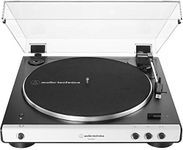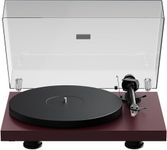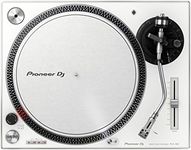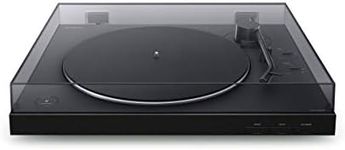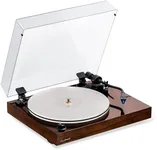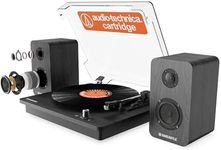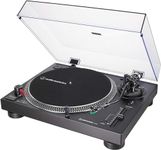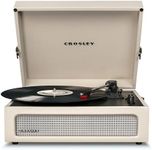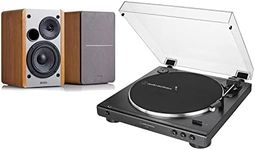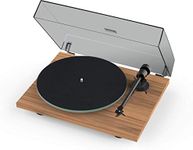Buying Guide for the Best Record Players
Choosing the right record player can be a delightful journey into the world of analog music. Whether you're a seasoned audiophile or a newcomer to vinyl, understanding the key specifications will help you make an informed decision. The right record player can enhance your listening experience, preserve your vinyl collection, and even become a stylish addition to your home. Here are the essential specs to consider when selecting a record player.Turntable TypeThe turntable type refers to the mechanism that drives the platter. There are two main types: belt-drive and direct-drive. Belt-drive turntables use a belt to spin the platter, which can reduce vibrations and provide a smoother sound. Direct-drive turntables have the motor directly under the platter, offering more consistent speed and durability, making them popular among DJs. If you prioritize sound quality for home listening, a belt-drive might be ideal. If you need durability and precision for mixing or scratching, a direct-drive could be better.
Cartridge and StylusThe cartridge and stylus are crucial components that read the grooves of your vinyl records. The cartridge houses the stylus, which is the needle that makes contact with the record. There are different types of cartridges, such as moving magnet (MM) and moving coil (MC). MM cartridges are more common and affordable, while MC cartridges can offer higher fidelity but are more expensive. The stylus shape also matters; elliptical styluses provide better sound quality than conical ones. Choose a cartridge and stylus based on your budget and the level of audio fidelity you desire.
Platter MaterialThe platter is the surface on which the record sits and spins. Platter materials can include plastic, aluminum, and acrylic. Plastic platters are lightweight and affordable but may not provide the best sound quality. Aluminum platters are more durable and can offer better sound isolation. Acrylic platters are considered high-end and can significantly reduce vibrations, enhancing sound quality. If you're looking for a basic setup, a plastic platter might suffice. For better sound quality, consider aluminum or acrylic.
TonearmThe tonearm holds the cartridge and stylus and guides them across the record. Tonearms can be straight or curved, and they can be manual or automatic. Straight tonearms are simpler and often preferred for their precision, while curved tonearms can reduce tracking errors. Manual tonearms require you to place the stylus on the record yourself, offering more control, while automatic tonearms do this for you, adding convenience. If you enjoy hands-on control, a manual tonearm might be your choice. For ease of use, an automatic tonearm is preferable.
Speed SettingsRecord players typically offer different speed settings to accommodate various types of vinyl records. The common speeds are 33 1/3 RPM for LPs, 45 RPM for singles, and sometimes 78 RPM for older records. Having multiple speed settings ensures you can play a wide range of records. Make sure the record player you choose supports the speeds of the records you own or plan to buy.
Built-in PreampA built-in preamp amplifies the signal from the cartridge to a level that can be processed by speakers or amplifiers. Some record players come with a built-in preamp, while others require an external one. A built-in preamp can simplify setup and reduce the need for additional equipment. If you prefer a straightforward setup, look for a record player with a built-in preamp. If you want more control over your audio setup, an external preamp might be better.
Connectivity OptionsModern record players often come with various connectivity options, including Bluetooth, USB, and RCA outputs. Bluetooth allows wireless connection to speakers, USB enables digital recording of vinyl, and RCA outputs connect to traditional audio systems. Consider how you plan to use your record player and choose one with the connectivity options that match your needs. For wireless convenience, Bluetooth is ideal. For digital archiving, USB is useful. For classic setups, RCA outputs are essential.
